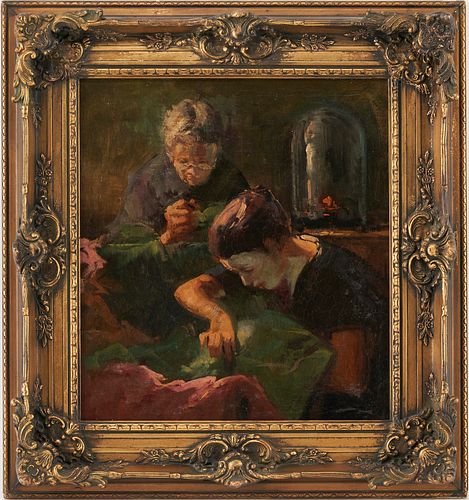Karoly Kotasz O/C Genre Painting, Two Women Sewing
Bid Increments
| Price | Bid Increment |
|---|---|
| $0 | $10 |
| $100 | $25 |
| $500 | $50 |
| $1,000 | $100 |
| $3,000 | $200 |
| $5,000 | $500 |
| $10,000 | $1,000 |
| $20,000 | $2,000 |
| $50,000 | $5,000 |
| $100,000 | $10,000 |
Condition
Provenance
Available payment options
Payment must be received no later than five (5) days after the sale.
If paying with a credit card, a 3.5% credit card processing fee will be applied to the final sales price (i.e. hammer price + buyer's premium + applicable taxes). If you have a credit card on file with Case, any winning bids will be automatically charged (up to $3000) along with applicable fees 72 hours after you receive your invoice unless other arrangements have been made.
If paying with wire transfer, please use the following information:
Bank: Pinnacle Bank
150 Third Avenue South, Suite 900
Nashville, TN 37201
Phone # (865) 766-3000
Swift Code: PNFPUS44
Routing, Transit, ABA: 064008637
Beneficiary: Case Antiques, Inc.
4310 Papermill Drive
Knoxville, TN 37909
Account #: NOT DISCLOSED (please refer to your invoice email for the Deposit Account Number or contact us )
The UPS Store of Bearden 865-584-0081 (press 5), fax 865-584-0094 store2630@theupsstore.com Click to get a quote
The UPS Store of Northshore Knoxville Contact – Eve 865-951-2499 store6461@theupsstore.com
John & Max Express LLC NOTE: large items & white glove delivery services only (driving range limitations may apply) Contact – Dina 865-230-1568 johnmaxexpress@gmail.com
























